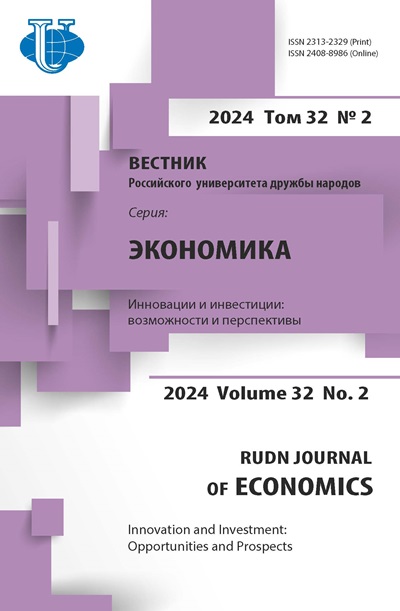PECULIARITIES OF APPLICATION OF DIFFERENT ADVERTISING TOOLS IN RUSSIA
- Authors: Katkova Y.I1
-
Affiliations:
- National Research University Higher School of Economics
- Issue: Vol 25, No 3 (2017)
- Pages: 427-435
- Section: Articles
- URL: https://journals.rudn.ru/economics/article/view/17773
- DOI: https://doi.org/10.22363/2313-2329-2017-25-3-427-435
Cite item
Full Text
Abstract
One of the most important and relevant business problems is the search for the optimal advertising budget and its distribution on advertising tools. This study focuses on the analysis of advertising budgets and its structure in the Russian market. In paper compares various types of advertisers, and provides recommendations for the application of advertising tools in Russia. The analysis was conducted based on the data of 500 companies working and advertising their products on the Russian market. The main research methods included a compare of averages and a correlation analysis. The author found significant differences in the application of promotional tools among advertisers from different types of business and sectors of the economy. It was found that the producers of goods and services greater use of television advertising than other advertising tools, but retailers use of outdoor, radio and online advertising to promote their products. Companies that sell fast moving consumer goods mainly used the television advertising. Firms selling consumer durables, instead of television ads use outdoor, internet and radio advertising. Sellers of premium and luxury goods advertise only in press, while companies from the service sector are actively using radio, outdoor and online advertising. The results of the study confirmed the findings of foreign researchers about the significant impact of type and sector of business on the allocation of advertising budget.
About the authors
Ya I Katkova
National Research University Higher School of Economics
Author for correspondence.
Email: yanakatkova@mail.ru
Katkova Ya.I., Assistant, post-graduate student of marketing department of the company, School of Business and Business Administration, Faculty of Business and Management, National Research University Higher School of Economics.
Kirpichnaya str., 33, Moscow, Russia, 105187References
- Bigné J.E. (1995) Advertising Budget Practices: A Review. Journal of Current Issues & Research in Advertising. Vol. 17, issue 2. Pp. 17—31. doi: 10.1080/10641734.1995.10505030
- Craig C.S., Rao V.R. (1980) Measurement of subjective trade-offs in media allocation decisions. Current Issues and Research in Advertising. Vol. 3, issue 1. Pp. 165—181.
- Danenberg N., Kennedy R., Beal V., Sharp B. (2016) Advertising budgeting: a reinvestigation of the evidence on brand size and spend. Journal of Advertising. Vol. 45. No. 1. Pp. 139—146. doi: 10.1080/00913367.2015.1090938
- Keller K.L. (2001) Mastering the marketing communications mix: micro and macro perspectives on integrated marketing communication programs. Journal of Marketing Management. Vol. 17. No. 7—8. Pp. 819—847. doi: 10.1362/026725701323366836
- Kotler P. (2007) Marketing essentials. Prentice Hall. 656 p.
- Nowak G.J., Cameron, G.T., Krugman D.M. (1993) How local advertisers choose and use advertising media. Journal of Advertising Research. Vol. 33. No. 6. Pp. 39—49.
- Piercy N. (1987) Advertising budgeting: process and structure as explanatory variables. Journal of Advertising. Vol. 16, issue 2. Pp. 34—40. doi: 10.1080/00913367.1987.10673075















